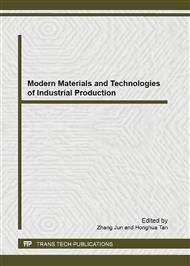p.213
p.218
p.223
p.228
p.234
p.240
p.244
p.249
p.254
Effects of Sudden Breakage of Hangers on Suspension Bridge
Abstract:
Hangers are the critical elements supporting stiffening girder in suspension bridge. The hangers probably break suddenly in service for the reasons of corrosion, fatigue or traffic accident. Because the hangers are anchored to the main cable, the sudden breakage of hanger causes strong vibration of main cable, and the vibration may damage some of the elements of the bridge. Using nonlinear dynamic analysis methods and adopting 3D finite element model, the responses of a suspension bridge to sudden breakage of hangers are studied in this paper. The results show that the sudden breakage of hanger has significant effects on tensions of the hangers adjacent to the broken hanger, the maximum tension of hanger produced by breakage of a hanger exceeds 2.2 times of its initial value, and the tensions of other hangers far away from the broken hanger are affected little. The breakage of a single hanger causes very large torsion moments of girder and reactions of bearings, but it has little effects on the tensions of main cable and moments of tower.
Info:
Periodical:
Pages:
234-239
Citation:
Online since:
September 2013
Authors:
Price:
Сopyright:
© 2013 Trans Tech Publications Ltd. All Rights Reserved
Share:
Citation:


